.svg)

Software Supply Chain Security: A Technical Imperative for Modern CTOs
.png)
As we observe Cybersecurity Awareness Month, the conversation around perimeter defense and identity management continues. But the most critical attack surface in modern software development remains largely unaddressed: the software supply chain itself.
The Architecture of Modern Risk
Today's applications are assembled, not written. The average enterprise application comprises over 80% open-source code, with dependency trees spanning hundreds of transitive components. Each microservice pulls from dozens of base images, each containing its own set of libraries, binaries, and configurations.
This compositional architecture creates an asymmetric threat model. While we've hardened our runtime environments and secured our networks, we've simultaneously expanded our attack surface to include every upstream dependency, every container registry, and every build artifact in our CI/CD pipeline.
The math is unforgiving: a single compromised component, multiplied across hundreds of services and replicated across multiple environments, can propagate malicious code at the scale and speed of our deployment automation.
Quantifying the Exposure
The data reveals the scope of the challenge we face:
- Vulnerability density: The median container image ships with over 400 known CVEs, with critical and high-severity issues present in 78% of production images.
- Registry contamination: Analysis of public container registries shows 63% of images contain at least one high-severity vulnerability, with mean time to patch exceeding 90 days.
- Supply chain attacks: Incidents targeting software dependencies have increased 742% since 2019, with attacks like SolarWinds, CodeCov, and XZ Utils demonstrating the systemic impact of compromised build chains.
These aren't edge cases. They represent the baseline risk profile of modern software delivery.
The Trust Boundary Problem
Traditional security models assumed a clear perimeter between trusted internal code and untrusted external inputs. That boundary no longer exists.
When developers import an npm package, pull a Docker image, or integrate a third-party SDK, they're executing code written by unknown authors, built in unverified environments, and distributed through infrastructure we don't control. Each dependency is a trust decision, yet most organizations lack the tooling or process to validate that trust.
The result is predictable: compromised packages execute in our build environments with full access to secrets, source code, and deployment credentials. Backdoored images run in production with elevated privileges. Malicious dependencies exfiltrate data through seemingly benign API calls.
The attack doesn't target our defenses. It exploits our trust.
Engineering for Provenance and Attestation
Addressing supply chain security requires fundamental changes to how we build and deploy software. This means implementing cryptographic verification at every stage of the artifact lifecycle:
Build-time verification
Every artifact must carry a cryptographically signed attestation that proves its provenance—what was built, when, by whom, and from what source. Tools like Sigstore and in-toto provide the cryptographic foundation for establishing this chain of custody.
Admission control
Kubernetes admission controllers must enforce policy-based validation before any workload enters the cluster. This includes signature verification, SBOM validation, and policy compliance checks that block non-conformant images at deployment time.
Runtime attestation
Beyond static analysis, we need runtime verification that images haven't been tampered with post-deployment and that running workloads match their signed attestations.
Continuous SBOM management
Software Bills of Materials must be generated automatically during builds, stored alongside artifacts, and continuously analyzed against emerging vulnerability databases. An SBOM isn't a compliance artifact—it's operational intelligence for incident response.
Operationalizing DevSecOps
The cultural shift matters as much as the technical controls. Security cannot remain a separate function that reviews code after it's written or scans images after they're built.
True DevSecOps means embedding security engineers directly into product teams, instrumenting security checks into developer workflows, and making security feedback immediate and actionable. When a developer pushes code, they should receive vulnerability analysis, license compliance issues, and policy violations within their IDE or PR workflow—not days later in a security report.
This requires investment in tooling that meets developers where they are, automation that eliminates manual security reviews, and cultural change that makes security a shared responsibility rather than a separate department's mandate.
The Strategic Imperative
For CTOs, software supply chain security represents both risk and opportunity. Organizations that implement comprehensive supply chain security can:
- Accelerate compliance: Automated SBOM generation and provenance tracking streamline SOC 2, ISO 27001, and regulatory audit processes.
- Reduce operational overhead: Preventing vulnerable components from entering production eliminates costly remediation cycles and emergency patches.
- Enable secure velocity: Developers can move faster when security is automated and non-blocking, shifting from “security reviews” to “security validation.”
- Minimize breach impact: When incidents occur, detailed provenance records enable rapid identification of affected systems and targeted remediation.
The alternative—maintaining status quo security practices while accelerating software delivery—creates compounding risk that scales with deployment velocity.
Moving Forward
Software supply chain security isn't a feature we can add later. It's foundational infrastructure that must be built into our CI/CD pipelines, our container platforms, and our development culture.
At CleanStart, we're building the tools that make this transformation practical: automated image hardening, continuous verification workflows, and policy enforcement that protects production without slowing development.
Because in a world where software is assembled from hundreds of external components, your supply chain security isn't just a technical control—it's your competitive advantage.
The question isn't whether to secure your software supply chain. It's whether you'll do it proactively or reactively, by design or by incident.
where he leads the development of software supply chain security solutions for cloud-native organizations.
Biswajit De
Co - Founder & CTO - CleanStart
.webp)
Reflections from KubeCon 2025
.png)
.webp)
Software Supply Chain in 2026
.png)
.webp)
Built-In Compliance: CleanStart’s FIPS Foundations Series
.png)






.webp)
.webp)
.webp)







%20(1).png)



